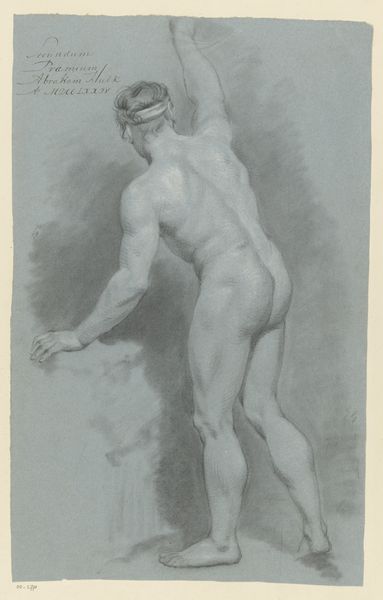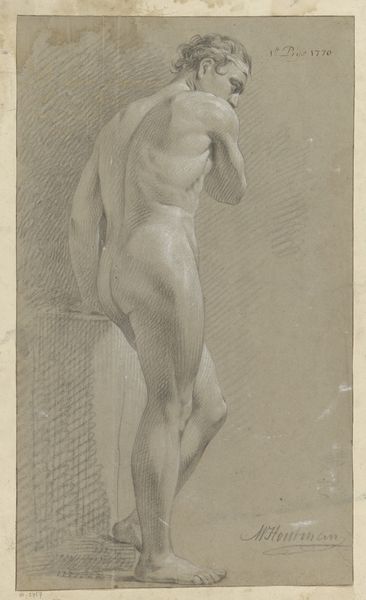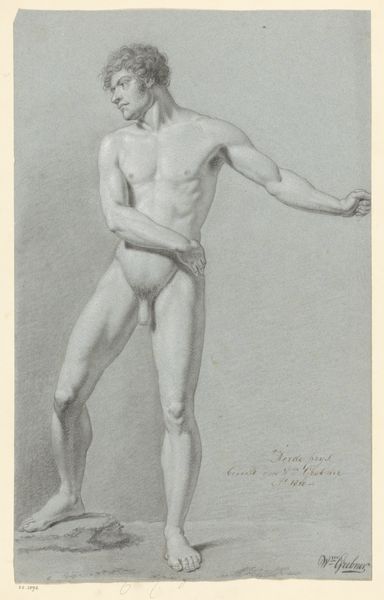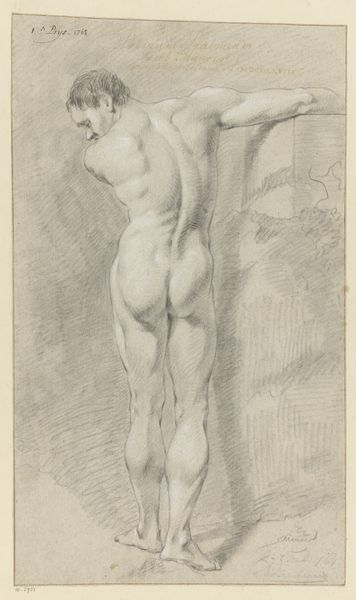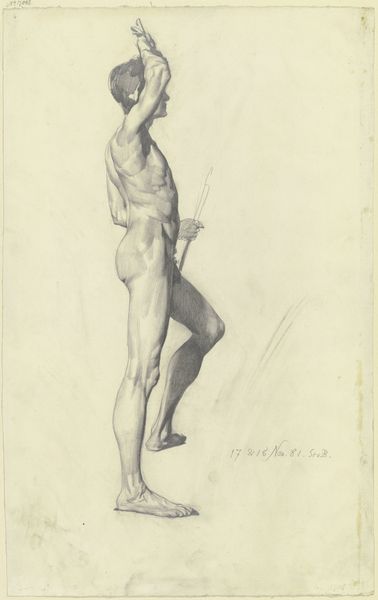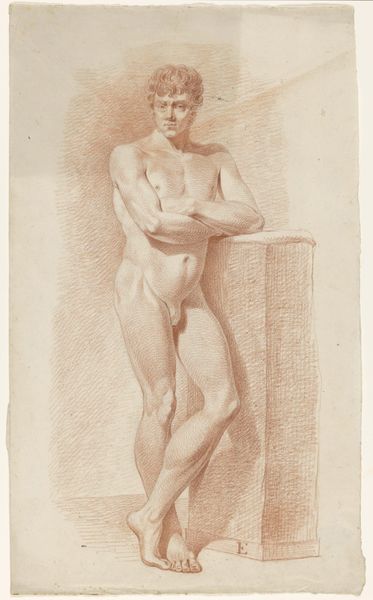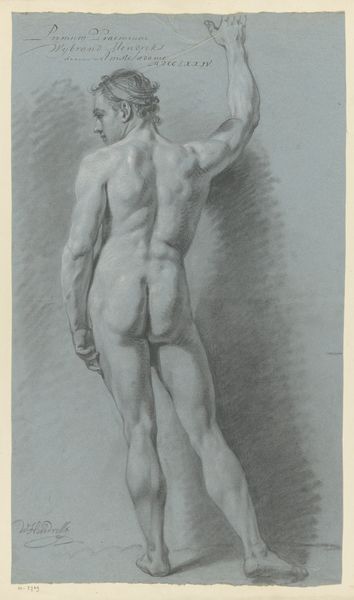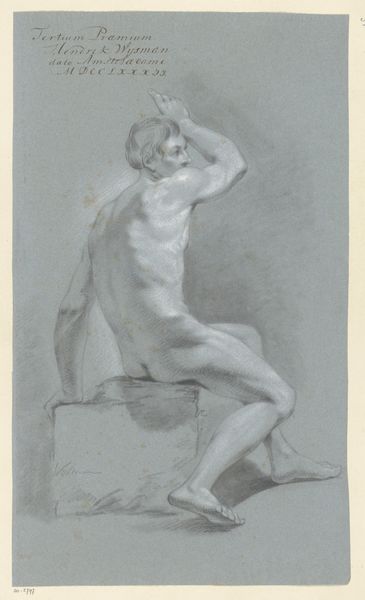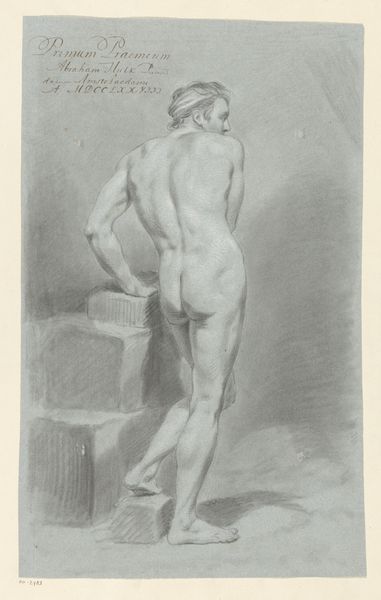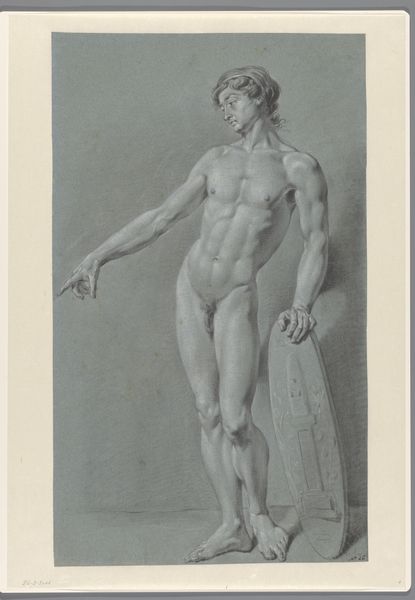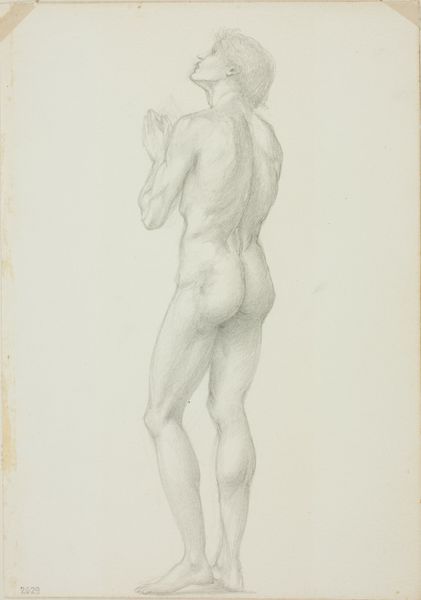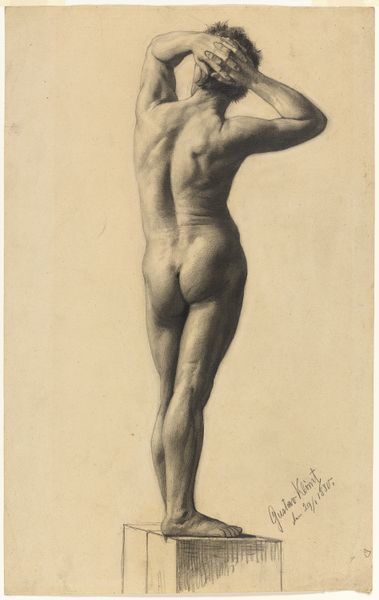
Staand mannelijk naakt, naar rechts Possibly 1806 - 1815
0:00
0:00
wouterjohannesvantroostwijk
Rijksmuseum
drawing, pencil
#
portrait
#
pencil drawn
#
drawing
#
neoclacissism
#
pencil sketch
#
charcoal drawing
#
figuration
#
pencil drawing
#
pencil
#
portrait drawing
#
academic-art
#
nude
Dimensions: height 460 mm, width 303 mm
Copyright: Rijks Museum: Open Domain
This is a chalk drawing of a nude male figure, created around 1807 by Wouter Johannes van Troostwijk. Note how the artist presents a classical male nude, reminiscent of ancient Greek sculptures, which symbolizes an idealized form of beauty, strength, and virtue. This idealization connects to a long tradition. Consider the Doryphoros of Polykleitos. The idealized proportions of classical sculpture were intended to express philosophical ideas about harmony and order. Here, van Troostwijk also draws upon this visual language, though with a distinctly northern European sensibility. Across time, the male nude has taken on various symbolic loads, from divine representation to emblems of humanistic thought. In the Renaissance, it signified a rebirth of classical values, while in later periods, it evolved to embody academic prowess. This drawing then becomes not just an artwork, but a potent carrier of cultural memory, continually reshaped by the currents of history and the depths of the human psyche.
Comments
No comments
Be the first to comment and join the conversation on the ultimate creative platform.
